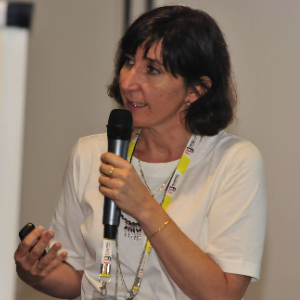Title : Cux1 enables inter-hemispheric connections of layer II-III neurons by regulating Kv1- dependent firing
Abstract:
Neuronal subtype specific transcription factors (TF) instruct key features of neuronal function and connectivity. Activity-dependent mechanisms also contribute to wiring and circuit assembly, but whether and how they relate to TF-directed neuronal differentiation is poorly investigated. Here we demonstrate that the TF Cux1 controls the formation of the layer II-III corpus callosum (CC) projections through the developmental transcriptional regulation of Kv1 voltage-dependent potassium channels and the resulting postnatal switch to a Kv1-dependent firing mode. Loss of Cux1 function led to a decrease in the expression of Kv1 transcripts, aberrant firing responses and selective loss of CC contralateral innervation. Firing and innervation were rescued by re-expression of Kv1 or postnatal reactivation of Cux1. Knocking-down Kv1 mimicked Cux1-mediated CC axonal loss. These findings reveal that activity-dependent processes are central bona fide components of neuronal TF-differentiation programs, and establish the importance of intrinsic firing modes in circuit assembly within the neocortex.
Audience take away:
1.New mechanisms of corpus callosum formation.
2.An understanding of how ion channels and excitability might be implicated in mental disorders.
3.The description of a window of plasticity in which callosal axons can be repaired can promote new therapeutic strategies targeting plasticity.
How will this help the audience in their job? Is this research that other faculty could use to expand their research or teaching? Does this provide a practical solution to a problem that could simplify or make a designer’s job more efficient? Will it improve the accuracy of a design, or provide new information to assist in a design problem? List all other benefits.
Understanding the mechanisms of callosal formation and the plasticity of cerebral cortical circuits during development that I will describe will contribute to understand mental disorders. It can promote new ideas for therapeutic intervention.




